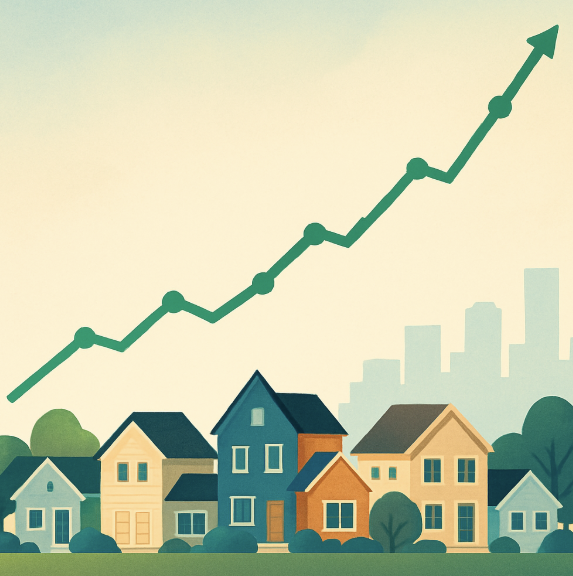After several years of high mortgage rates, hesitation, and limited movement, the housing market is finally starting to show real signs of recovery. It’s not a dramatic surge, but the momentum building right now is meaningful — and it’s reshaping opportunities for buyers and sellers across the country. If you’ve been waiting, watching, or wondering when things will start to feel “normal” again, this shift is worth paying attention to.
Below are the key trends inspiring confidence as we move toward 2026.
Mortgage Rates Are Gradually Easing — and That Changes Everything
Interest rates have been the biggest obstacle for most buyers. While it’s true that rates still move up and down day-to-day, the bigger picture reveals a welcome trend: rates have been slowly drifting downward through much of 2025. This isn’t just good news — it directly impacts affordability.
As borrowing costs ease, buyers gain more purchasing power. A household working with a fixed monthly budget can now stretch that budget farther than they could last year. In practical terms, many buyers can afford homes that would have been out of reach just months ago. That extra buying power is helping more people re-enter the market, leading to a steady rise in activity.
Sellers Are Returning as the “Lock-In Effect” Starts to Fade
Over the past several years, one of the biggest challenges in real estate was the historically low mortgage rates homeowners didn’t want to give up. This kept inventory extremely limited and frustrated buyers who couldn’t find enough homes to choose from.
But the dynamic is shifting. As rates soften and life events create natural transitions — family changes, relocations, retirements, downsizing — more sellers are finally stepping forward. Inventory levels have grown to heights not seen in roughly six years, which is a significant turning point in today’s housing market.
This increase in homes for sale benefits everyone. Buyers get more choices. Sellers get a market that’s more balanced — meaning well-priced homes stand out, attract more eyes, and can still sell quickly.
Buyer Demand Is Rising Again — Slowly, But Steadily
As affordability improves and inventory grows, buyers are becoming more active. Mortgage purchase applications are trending higher compared to last year, signaling a renewed willingness to take the next step in homeownership.
Industry experts, including economists from major housing organizations, are forecasting moderate sales growth through 2026. This supports the idea that today’s shift isn’t a temporary bump — it’s the beginning of a more stable recovery.
Demand isn’t exploding, but it is strengthening in a healthy, sustainable way. For both buyers and sellers, this creates a market with better balance, better opportunities, and clearer expectations.
What This Means for You Heading Into 2026
If you’ve been on the sidelines — either waiting to buy or delaying a sale — the conditions shaping up right now may work in your favor:
• Buyers benefit from a combination of easing mortgage rates, increased inventory, and improved affordability.
• Sellers benefit from growing buyer demand and less competition than in peak years.
• Both sides benefit from a market that’s becoming more predictable and less volatile.
This emerging stability is something many have been waiting years to see.
Final Thoughts
The housing market isn’t experiencing a dramatic boom, but it is turning a corner. Lower mortgage rates, more available homes, and increasing buyer activity all point toward a more active and optimistic 2026.
If you’re considering buying or selling, now is an excellent time to connect with a trusted real estate professional who understands current trends and can help you take advantage of this shift. With the right guidance, you can position yourself for success as the market continues to strengthen in the year ahead.



